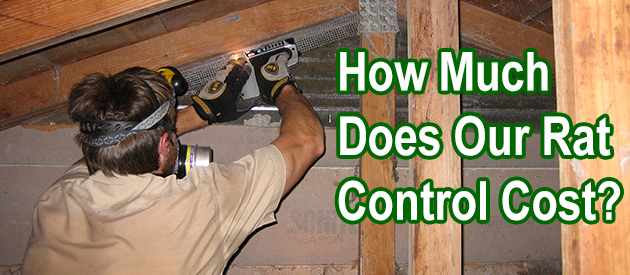Charleston County, Charleston Rat Control Situation:
Hey David, how do I get rats/mice out of a single wide trailer home? There is maybe 4 inches of space between the ceiling and roof. There is scratching sounds in the walls, and pee stains in the ceiling tiles. There's no way to get into the ceiling. Will I need to gut the ceiling tiles to set traps? There is also a tree that hangs over the trailer house. I heard that rats can use trees to get on the roof, is that true? My girlfriend wants a humane way to remove the rats/mice but I have no way to set cages in her house because there is no attic. Any suggestions?? Thank you for your time and your website is very helpful.
I just read your article about how to remove rat in the attic. The company I talked to told me he has to suck all insulation in the attic out to get rid all the babies, disinfected the attic & spray the new insulation. All this will cost several thousand dollars, does it sound right to you?
We have found a dead rat on our garden. Can you come and take it way for us? Do you charge? Can we take it to the local refuge centre in Charleston? We don't know what to do?
Hi David, After reading your excellent article, I wrote you a long Email and it didn't go through so this is really a test. I've tried numerous ways to get rid of rats in my house i.e., 1. Attack Wave, 2. traps with peanut butter and beef sticks or both, 3. Glue traps. 4. Electronic zapper etc., and the only thing that worked for a while were the Victor traps with peanut butter and beef sticks. Lately, nothing seems to work and I thought I'd try to get some new ideas from you. I read your comment about peppermint oil on the Victor traps but I wasn't sure whether you were being facetious about your having success with this method. Were you?
Charleston Rat Control Tip of The Week
What Are Possible Diseases Rats Can Carry?
Apart from causing severe damage to the structure of houses, rats are major carriers of life-threatening diseases. This simply shows how important it is for you to remove them from your home and make sure they don't find their way back.
Disease transmission from rats to humans can occur through several routes. These include;- Human exposure to wastes of rats such as feces, saliva, nesting materials, and urine while handling or removing them from homes.
- Bites from rats that are infected.
- Unsafe handling of rats (touching of rats without wearing gloves) and eating food that is contaminated with rat feces, urine, or saliva.
Diseases can be transmitted from rats through any of the above means. This clearly shows that if you have rats running around your home, you are at a high risk of getting infected. The following are some of the possible diseases rats can carry.
1. Hantavirus
This particular disease is one of the most life-threatening diseases that rats carry. Currently, Hantavirus is yet to have a known cure, vaccine, or treatment. Some of the symptoms of this particular disease include abdominal pain, vomiting, diarrhea, and nausea.
2. Salmonella
This particular disease is a bacterial infection carried in the digestive tracts of rats. When they pass feces, it usually contains a large proportion of this bacteria. If by mistake you consume any food substances that are contaminated with this bacteria, you might contract Salmonella. Some of the symptoms of this disease include diarrhea, vomiting, fever, chills, nausea, and abdominal cramps.
3. Lymphocytic Choriomeningitis Virus
This disease is another life-threatening disease that rats transmit to humans when there is contact. LCMV is capable of causing encephalitis and meningitis if not quickly managed at its early phase.
4. Rat-bite Fever
Unlike other types of diseases, rat-bite fever is only transmitted when a rat bites you. The bacteria of this disease is found in the saliva of rats. The symptoms of this infection include high fever, muscle pain, headaches, and skin rash.


